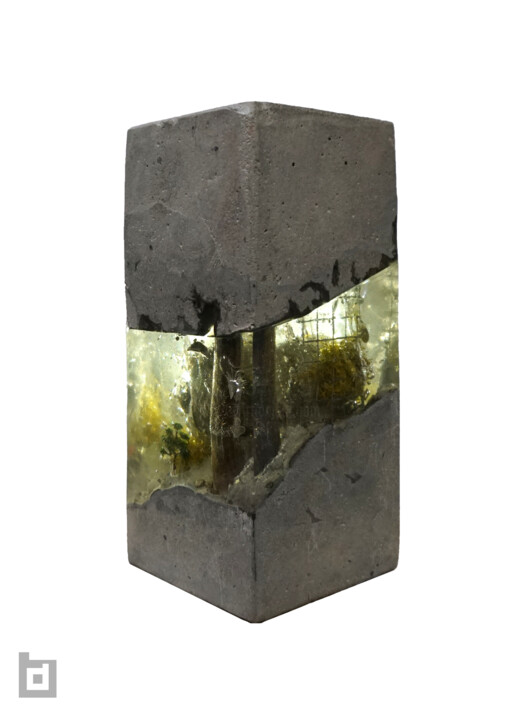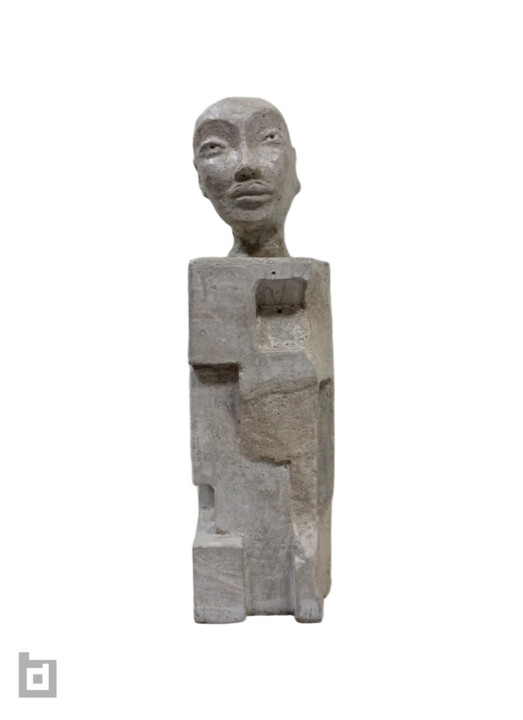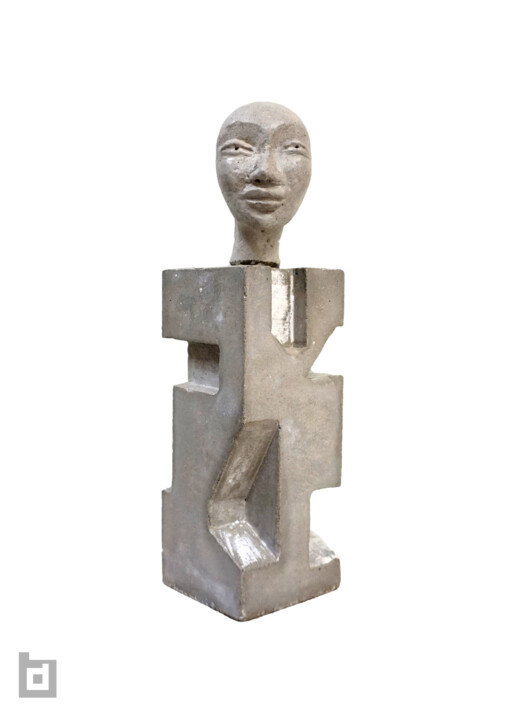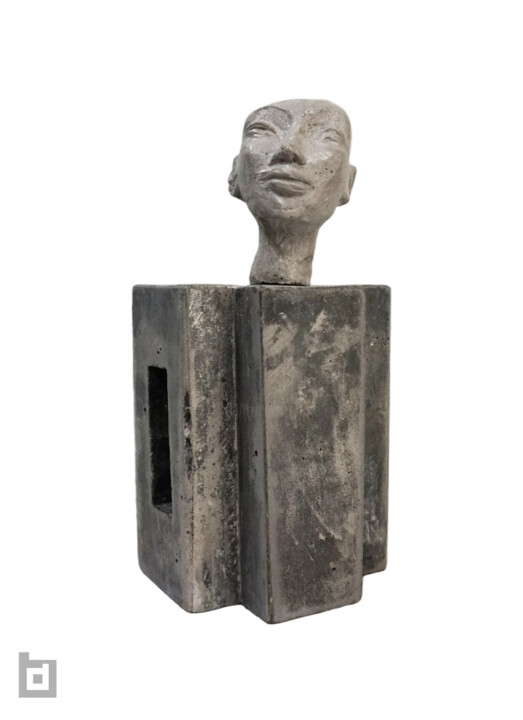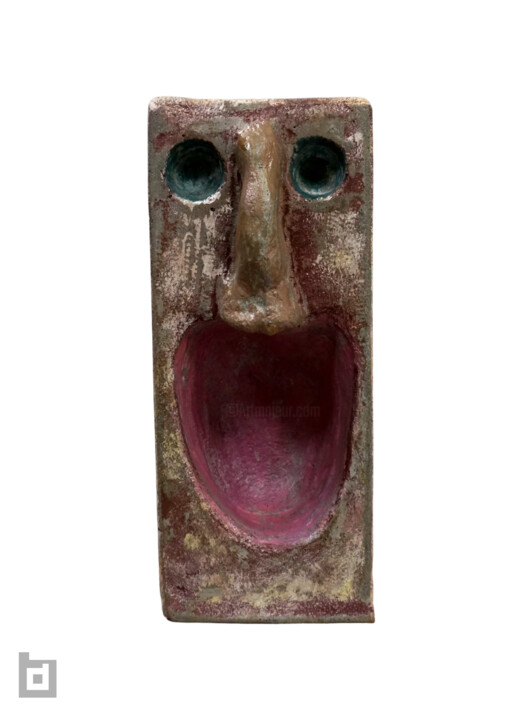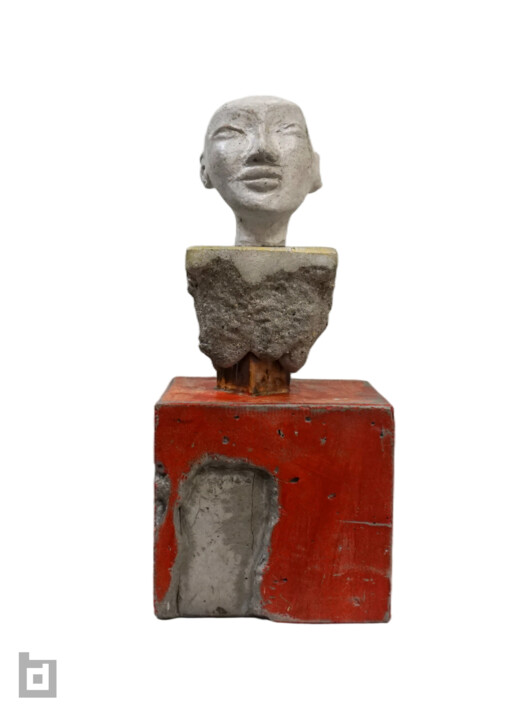What inspired you to create art and become an artist? (events, feelings, experiences...)
Art has always been a constant presence in my life—a deep need to express myself and connect with others. But it was during my twenty years of experience in traditional screen printing that this passion truly became a vocation.
Screen printing allowed me to explore a wide range of materials and techniques, and over time I developed a deep understanding of their expressive potential. Discovering concrete was a real revelation. Its rawness, its ability to transform under my hands, fascinated me from the very beginning. I started experimenting—mixing concrete with other materials, creating unique textures and surfaces.
Curiosity has always driven me to go further, to seek new challenges and push my limits. Creating unique pieces, the result of a handcrafted process and ongoing research, has become my greatest satisfaction. Each work is a part of me—a fragment of my story and emotions.
What is your artistic background, and which techniques and materials have you explored so far?
My artistic journey is rooted in artisanal screen printing—a technique I explored and refined for twenty years. It’s a manual craft made of repeated gestures and deep knowledge of materials. I like to think of screen printing as a dialogue between the artist and the surface—an interaction that demands both precision and sensitivity.
Over the years, I’ve experimented with a wide range of materials: fabric, paper, wood, metal. Each one has its own personality, its own resistance, its own way of absorbing color. But discovering concrete was what truly revolutionized my practice. The materiality of concrete—its ability to transform in my hands—captivated me from the start.
I began mixing it with other elements, like sand, soil, and natural pigments, creating irregular surfaces full of nuance and contrast. Concrete allowed me to move into three-dimensional work, breaking free from the two-dimensional limits of screen printing. I started modeling sculptures, creating installations, covering walls.
In all my works, there’s a strong emphasis on manual labor. I love getting my hands dirty, feeling the material under my fingers, experimenting with new combinations. For me, art is a sensory experience—a journey to discover new expressive possibilities.
What are the three aspects that set your work apart from other artists, making it unique?
What makes my work unique is the ability to transform a seemingly cold and inert material like concrete into something alive—filled with emotion. I start my creative process with a vague idea, an image forming in my mind. Then, with hands covered in concrete, I begin to shape and give form to that vision. The imperfections that emerge during this process are not mistakes—they’re the marks of authenticity and craftsmanship.
Each sculpture is a journey—an ongoing exploration of the expressive potential of concrete. And in the end, I hope to convey to the viewer a sense of wonder, of surprise, of connection with nature and with the material itself.
Where does your inspiration come from?
Brutalist style was a true revelation for me. Its power, honesty, and ability to create emotionally charged spaces have deeply inspired me. I like the idea of using concrete to create miniature architectures—small secular cathedrals that invite contemplation and reflection. My sculptures are like fragments of imaginary buildings, suspended between past and future.
What is your artistic approach? What visions, sensations, or emotions do you wish to evoke in the viewer?
My works are urban archaeologies. I take pieces of the city, fragments of an industrial past, and reassemble them into new forms of life. I aim to evoke a sense of nostalgia and belonging, encouraging the viewer to reflect on the history and evolution of our built environment. My sculptures are like scars of time, telling stories of growth and decay.
What is your creative process like? Is it spontaneous or does it involve a long preparatory phase (technical, inspired by art history, or something else)?
My creative process is a constant dialogue with the material. I start with an idea, an image that takes shape in my mind. Then I begin to give that vision a form. But often, the material takes over—suggesting new directions, new shapes. It’s like witnessing the birth of a new creature—always surprising and unexpected.
Do you use a particular working technique? If so, can you explain it to us?
My artistic practice is based on a continuous dialogue between form and material. I use silhouettes as frameworks, as containers within which my sculptures are born. Fresh cement, still malleable, becomes my clay—the material I shape with my hands. It is in this moment that the artwork comes to life, that forms are defined and emotions emerge.
At the same time, I also work with preformed concrete blocks, which I sculpt using more traditional tools. The chisel and hammer allow me to reveal the hidden beauty within the raw material, to create contrasts between smooth and rough surfaces, between solids and voids.
In both techniques, the acceptance of imperfections is fundamental. Cracks, air bubbles, and irregularities become an integral part of the work, bearing witness to the creative process and to the very nature of the material. They tell the story of the sculpture.
Are there innovative aspects in your work? Can you tell us what they are?
Working with concrete requires great sensitivity and a deep understanding of the material. The workable window is limited, which demands the development of a precise and rapid technique. However, it is precisely this challenge that makes working with cement so fascinating and stimulating. Finding the right balance between sand, cement, and water—and timing the process correctly—is crucial.
Do you have a preferred format or medium? If so, why?
I prefer working on small-scale sculptures for reasons of practicality and accessibility. Although cement is a captivating material, its specific weight makes large-scale works challenging to handle and exhibit. Small sculptures give me greater control over the creative process and allow me to produce pieces that can be easily displayed in various contexts, making them more accessible to the public.
Where do you create your work? At home, in a shared studio, or in your own studio? And how do you organize your creative process in that space?
My studio is my refuge—a place where I can freely express my creativity, far from the distractions of the outside world. Over the years, I’ve filled this space with a myriad of objects that fuel my imagination. It’s a bit like a Noah’s Ark, where different materials, antique tools, and works-in-progress coexist. While it may appear chaotic, everything is actually very organized in my mind, and each element has its own place.
Does your work require you to travel to meet new collectors, attend art fairs, or exhibitions? If so, what do you take with you?
At the moment, my work is still in its early stages. There have been only a few opportunities to present my pieces in person, but I hope that will change in the future. Taking part in fairs and exhibitions would be a fantastic opportunity to meet new collectors and build new collaborations. In the meantime, I’m making the most of the internet’s potential to share my work with a wider audience.
How do you envision the evolution of your work and your artistic career in the future?
I see my artistic journey as a continuous evolution. Concrete is a fascinating material, but I also want to explore other expressive possibilities. I’d love to experiment with new materials and techniques, to create works that are increasingly original and surprising. I’m curious to see where this exploration will lead me, and I’m sure my work will keep surprising me along the way.
What is the theme, style, or technique of your latest artistic production?
My latest work falls within a style I would describe as brutalist, with a strong emphasis on geometric forms and the raw materiality of concrete. However, I’m trying to soften this rigidity by introducing natural elements, such as plants. The idea is to create a dialogue between the solidity of the sculpture and the lightness of vegetation—a contrast that generates a very compelling visual tension.
Can you tell us about your most significant exhibition experience?
The most important one took place in the village where my family originates. The contrast between the rural, intimate setting of the village and the contemporary nature of my works created a very interesting dialogue. Exhibiting my sculptures in a place so far removed from urban centers allowed me to reflect on the role of art in society and its ability to communicate beyond conventional aesthetics.
If you could recreate a famous artwork from art history, which would you choose—and why?
I would choose Guernica by Picasso. I can imagine creating a brutalist version of Guernica, where the figures are fragmented and deconstructed into simple geometric forms, sculpted in concrete. The result would heighten the sense of violence and destruction, while giving the piece a new sense of monumentality.
If you could invite a famous artist (living or dead) to dinner, who would it be? How would you suggest spending the evening?
If I could invite a famous artist to dinner, I would undoubtedly choose David Lynch. His creative and visionary mind—capable of crafting surreal and unsettling atmospheres—has always fascinated me. I imagine a dinner in a softly lit place, with a hushed, slightly mysterious ambiance, just like in his films.
As for the after-dinner activity, I’d propose something truly unique: watching together the most intense five minutes of the 1983 Torino–Juventus derby, from the 70th to the 75th minute…






 Olimpia Gaia Martinelli
Olimpia Gaia Martinelli

